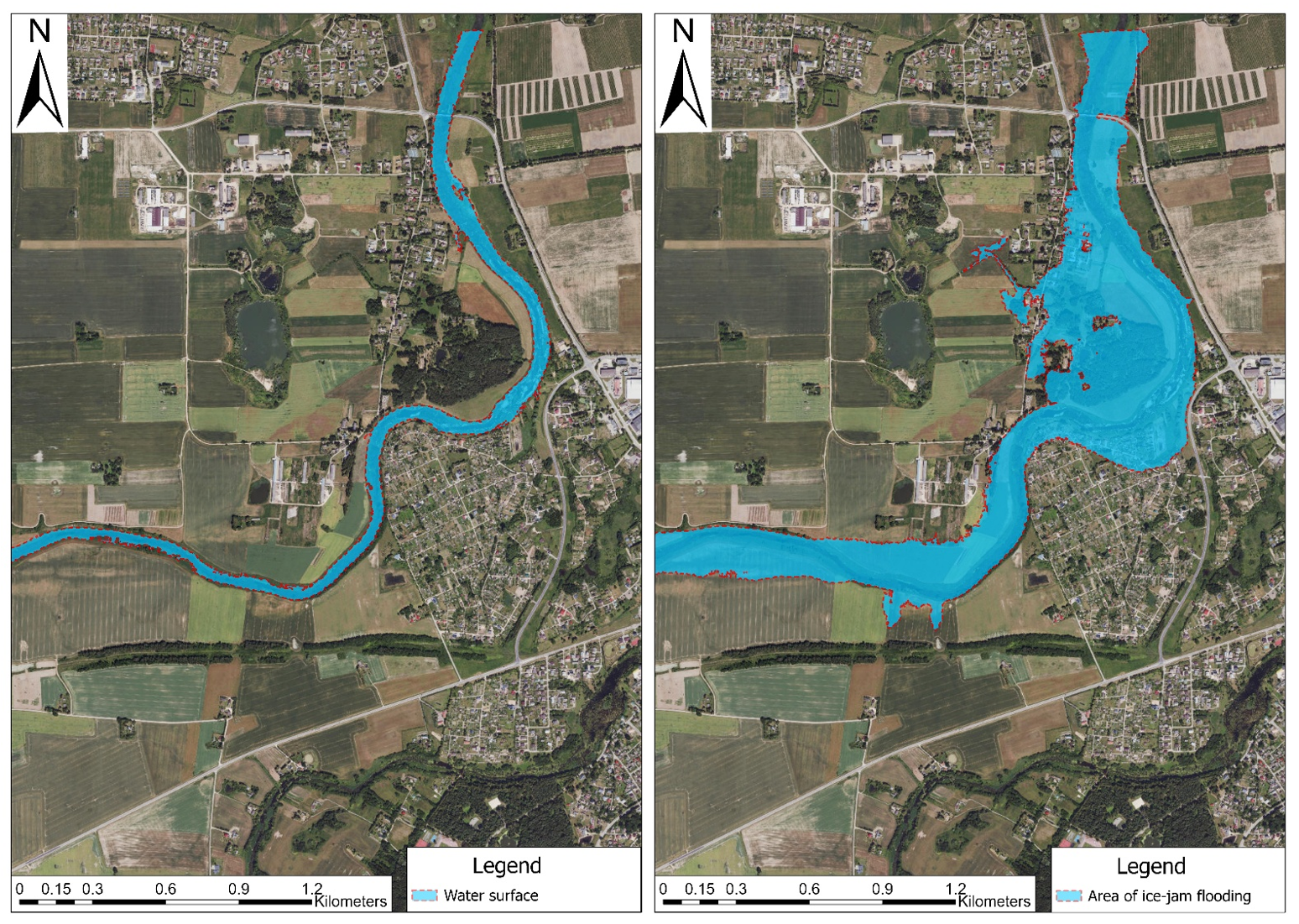As part of the ICEREG project, a hydrodynamic model developed to assess flood and ice-jam risks in the Mūša River was successfully validated. The model’s performance was tested against data from a regular flood event in 2022 and a severe ice-jam flood in 2013.
According to hydrodynamic modelling expert Dr. Serhii Nazarenko, the model closely reflects observed water level variations: “In the 2022 flood case, the difference between simulated and measured peak water levels was up to 7 cm, with a correlation coefficient of 0.997 – indicating a very high level of accuracy.”
In the 2013 ice-jam flood simulation, the model also showed consistent trends, though simulated water levels were slightly higher due to limited data on ice parameters such as thickness and location. Nevertheless, the correlation coefficient of 0.98 confirms the model’s reliability for further risk assessment applications.
This validation step is crucial for the ICEREG project, which aims to improve ice-jam flood risk management in Latvia and Lithuania. As climate change increases the unpredictability of extreme weather events, accurate modelling of ice-jam dynamics is essential for identifying vulnerable areas, enhancing flood maps, and improving early warning systems. The validated model will support national and local authorities in making informed decisions and strengthening resilience in cross-border regions.

The Project is funded by the European Union’s Interreg VI-A Latvia–Lithuania Programme 2021–2027
More information: https://www.lei.lt/en/projektas/icereg/





